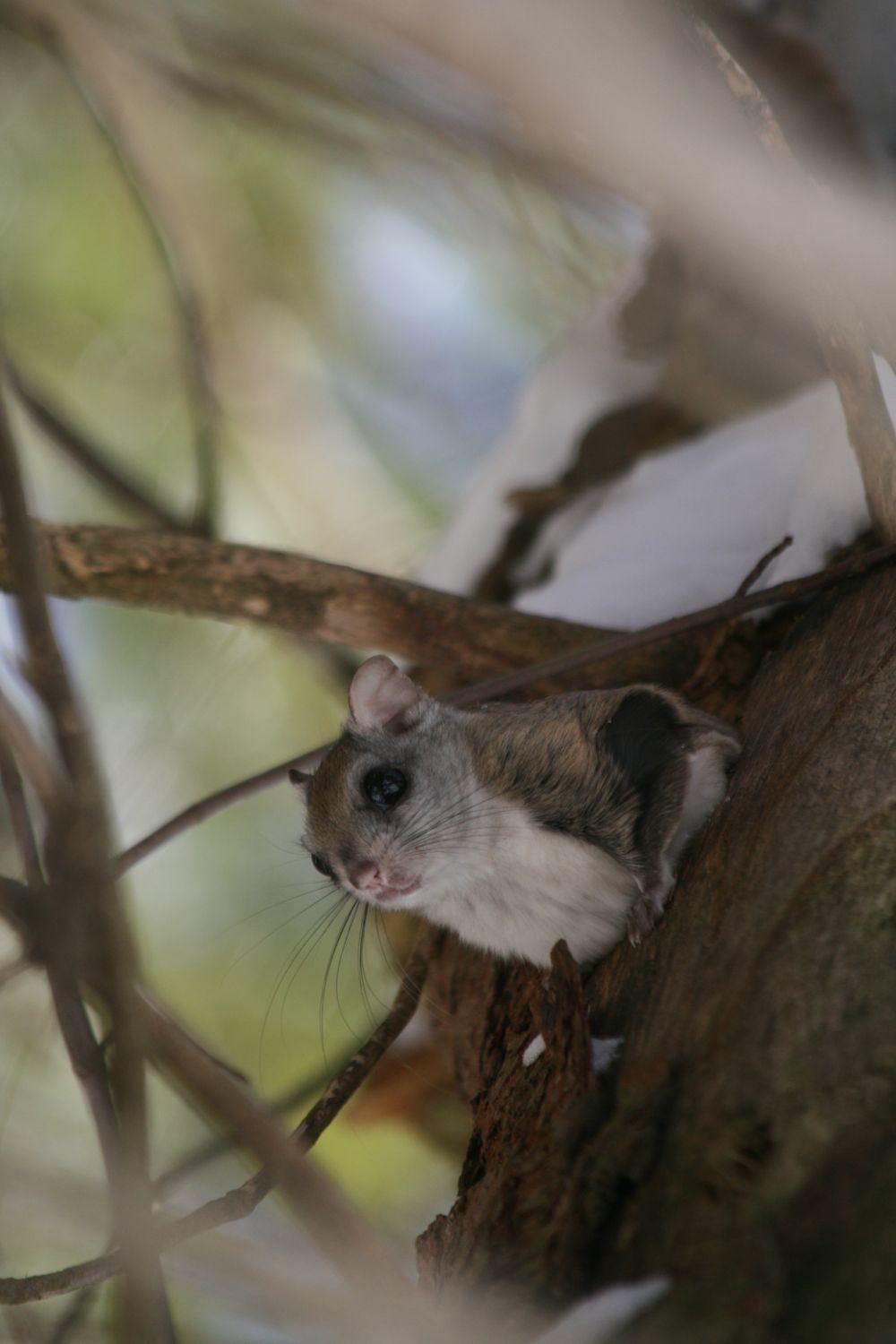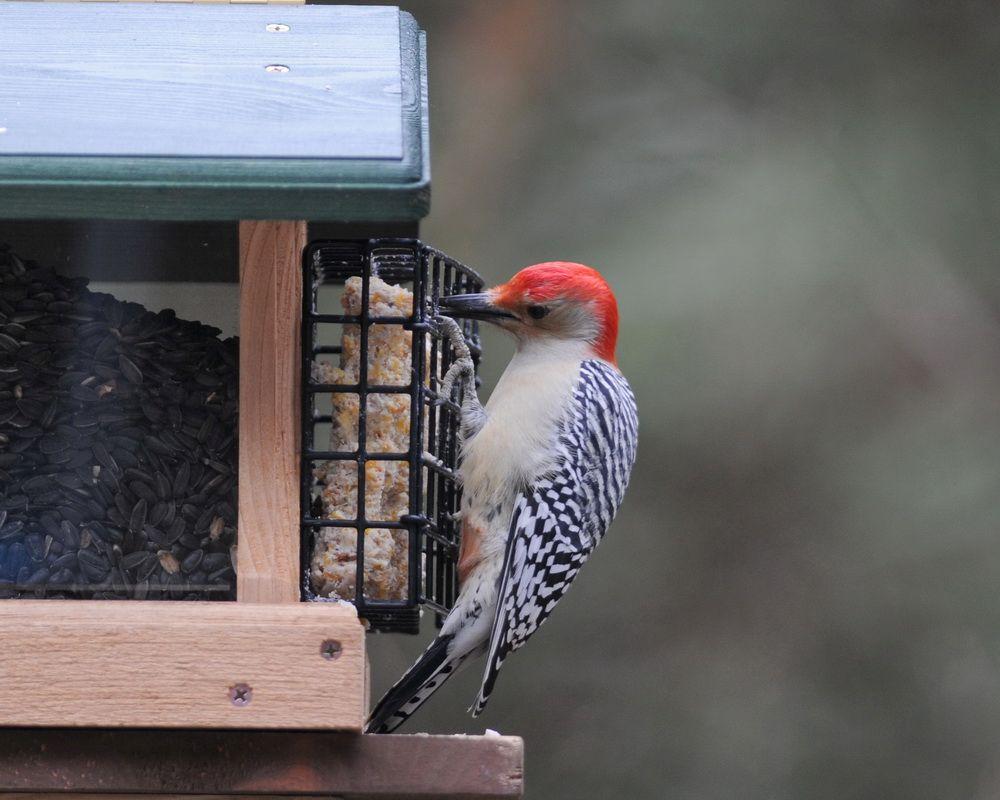- Tags:
- Wildlife

Preparing for winter is serious business for wildlife - including this Northern flying squirrel.
Photo by Ben Hudson
When autumn approaches, creatures great and small prepare for the winter ahead
After late autumn rains strip away the last bright maple leaves, and nights turn cold enough to drive hard frost deeper into the soil, New Englanders respond with instincts that mirror the activities of the natural world.
A rainy Sunday afternoon offers few more comfortable options than building a nest of quilts on the couch and snuggling up with the television remote and a football game. The raw autumn chill stimulates cravings for high-calorie comfort food: nachos and chili with melted cheese, hearty beef stew, squash soup with hot bread and butter. Thanksgiving dinner features a harvest theme: heaping portions of turkey, mashed potatoes, gravy, and stuffing with pumpkin pie. Why don’t we prepare pot roast, potatoes, stuffing, and gravy year-round?
Autumn necessitates “stuffing.”
We make like our wild neighbors: we harvest, and we hoard. We gather to eat and to fatten. We stoke our woodstoves and metabolic stoves. Our average daily caloric intake spikes as both temperatures and hours of daylight plummet.
We’ll need that extra insulation provided by an added layer of slow-burning fats for the cold weather ahead. We also need the quick energy of extra carbohydrates in the short term for completing the remaining autumn chores to prepare our winter dens.
Colder temperatures in November trigger an instinctive impulse to get busy. We become focused and task-oriented. There’s no shortage of domestic activity: stowing summer clothes and finding the winter wardrobe, cleaning house, canning and jarring, pulling vegetable gardens, and mulching perennial beds. By October, the urge to rake leaves and stack cordwood becomes almost acute.
By contrast, creatures not well-prepared or adapted for winters spent hunting or hibernating have already migrated south, or simply died. Most native birds migrate. Those that remain by November tend to roost in tree cavities and use metabolic tricks like controlled shivering to survive winter.

Mammals feed heavily to build subcutaneous fat reserves and grow thick winter coats. Ermine and snowshoe hare turn white. Rodents squirrel away seeds and nuts in their dens. Beavers build a cache of hardwood branches to sustain them beneath the ice.
Amphibians and reptiles retreat to muddy pond sediment or burrow beneath the soil frost line. Turtles can absorb oxygen from water through their nostrils. Frogs and salamanders do the same through their skin. Fish restrict movement and retreat to deeper, slow-moving water to avoid ice scouring in shallow streams.
Insect eggs and larval caterpillars are tucked beneath tree bark to await hatching or metamorphosis next spring. For most adult insects, just like annual plants, winter means death.
Diminished daylight also triggers plant shutdowns. Hormones that regulate growth, flowering, seed development, and fruit ripening are influenced by relative levels of light and dark. Decreased daylight stimulates the production of the hormones, which initiates autumn leaf-fall and the formation of thick, waxy buds to protect tender tissue against desiccation during winter dormancy. Frugal conifers cease photosynthesis and seal their needles by early September.
While wildlife seem to respond to the onset of cooler weather, in reality, it is the gradually falling levels of light in summer that influence hormones to trigger changes in metabolism and behavior. Plants and animals must effectively measure and respond to daylight rather than waiting for cold temperature cues.
While people report that the onset of cold autumn weather seems to “flip a switch” to trigger behavioral impulses like compulsive leaf-raking or cravings for food smothered in melted cheese, for plants and wildlife, it’s the gradual ebb of sunlight that is the more important cue. Falling light triggers the metabolic adaptations and innate behaviors necessary to survive life in the cold.
If the heralded “first frost” were also the first clue to an approaching winter, there wouldn’t be ample time to prepare.
Now please pass that gravy boat!
Naturalist Dave Anderson is director of education for The Society for the Protection of New Hampshire Forests. He may be reached via e-mail at danderson@forestsociety.org or through the Forest Society’s web-site: www.forestsociety.org.
